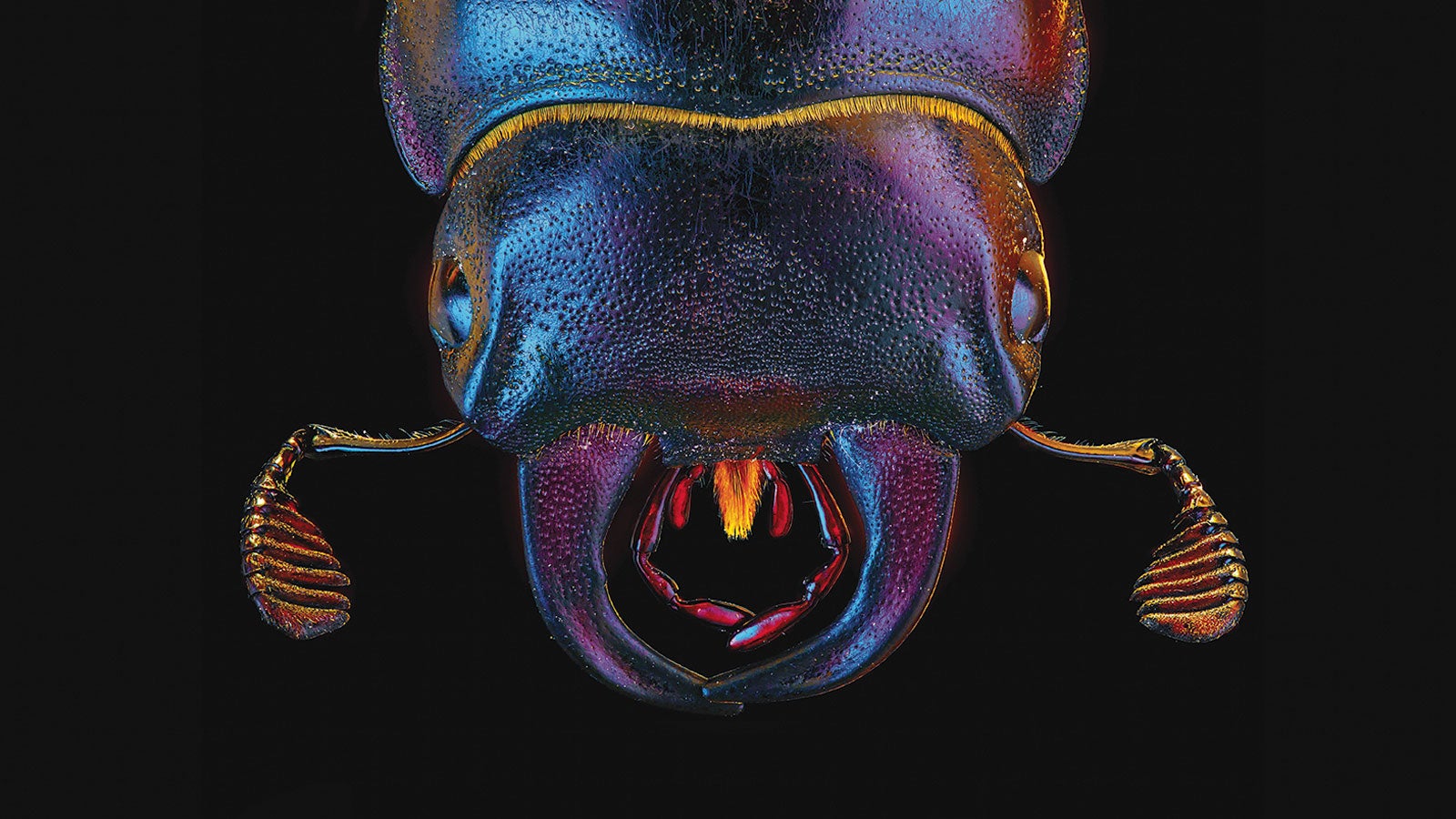
Monsters in the Closet
Spring 2017 | By Jay Hamburg
Tucked in a corner on the first floor of the Biology Building, with hardly a sign to mark its location, sits a top-notch research facility that houses one of the nation’s leading insect collections — a place renowned for identifying new species that creep, crawl and fly.
The University of Central Florida Collection of Arthropods, known more commonly as the Bug Closet, holds more than 560,000 insects, each one carefully labeled and stored in one of 1,030 drawers.
It’s easy to stroll past this modest facility, which has more insect specimens than neighboring Seminole County has people. But inside its walls is a place that reminds us that up to one of five animals in the world is a beetle and that around the world insects are used for jewelry, studied for possible cancer-fighting properties and act as muses for pop culture phenomena such as Spider-Man and Pokémon.
“Insects are the most diverse and abundant animals on Earth, and the impact insects have on humans is immeasurable,” says director Barbara Sharanowski. “Some are major pests, causing immense destruction to crops or numerous deaths by vectoring disease. Others are extremely beneficial and valuable by pollinating plants, controlling pests or contributing to soil fertility and ecosystem health. The Bug Closet preserves a historical and evolutionary record of the numerous insects that surround us, including native species and exotics that invade our ecosystems.”
“Insects are the most diverse and abundant animals on Earth, and the impact insects have on humans is immeasurable”Barbara Sharanowski
Respected in the scientific world for its reputation and collection size, the Bug Closet also serves as a lending library for scientists. Its electronic database, one of the largest in the world, includes information about where and when each insect was found, and its mounted specimens have been lent to researchers as far away as Colombia, Brazil and Italy. As a result, more than 30 significant research articles have been published using the UCF collection since 2011.
With increasing inquiries from international researchers and students, Sharanowski wants to help the tiny museum spread its environmental message to a wider audience by increasing its space. She also wants to grow the collection with specimens from other countries as well as discuss how the public can more easily discover the knowledge gathered during more than 20 years of work.
“We want to get kids outside and interested in the plant, animal and insect life around them,” Sharanowski says. “We want to facilitate passion in biology.”
Sharanowski recognizes the mystery of insects — how there is so much diversity in the insect world; how thousands of species still wait to be discovered. They’re everywhere.
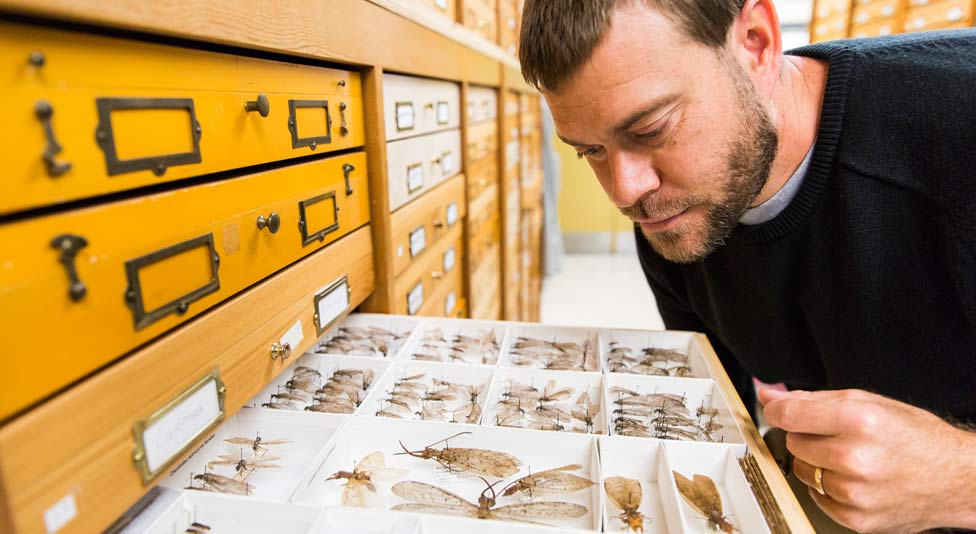
Collection manager Shawn Kelly ’12 inspects a tray of dobsonflies and fishflies in one of the 1,030 drawers found in the Bug Closet. While the larvae of both insects, which are part of the Corydalidae family, are aquatic predators that use their strong, sharp mandibles to hunt prey, the mature insects are practically vegans, surviving only on nectar and fruit juice — if anything at all.
Tiny Bugs Create Huge Collection
The Bug Closet is staffed mostly by students, like biology major and outreach coordinator Erin Barbeau. Like the other students who work there, she loves bugs, referring to even the creepiest among them as “cute.”
And if you let her, Barbeau will convince you of the importance of nearly every insect in the collection, including fireflies that lure similar species to their doom, dragonflies that breathe through their butts, and parasitic wasps with life cycles that inspired the monster in Alien. Just like the alien in the sci-fi thriller, the tiny wasps lay their eggs in other insect species, and when the larvae hatch, they consume their host from the inside out.
But not every bug has a backstory, and entomologists don’t always know the role each plays in the ecosystem. That’s the ambition of the Bug Closet, and the people who work there take pride in recording the locations and ecosystems where the insects were found. This data helps explain why a bug barely visible to the naked eye might hold a vital spot in the chain of life.
Biologists point out that we would never know what impact an insect might have on the evolutionary chain if it’s never discovered. Tiny parasitic wasps, for example, don’t sting or harass humans, but in many cases, they control insects by devouring the bugs that might otherwise devour your plants and garden.
“There are a lot of insects out there that we didn’t know existed,” Barbeau says. “And you can’t protect what you don’t know is out there.”
Each discovery of a new species helps scientists understand more about the ecosystem’s complex connections between insects, plants and animals. “The more you know, the more you realize you don’t know,” says collection manager Shawn Kelly ’12, who identified one of the 23 new species discovered at the Bug Closet.
The late Stuart Fullerton, a research associate at UCF who led a group of students with a similar passion for collecting and studying insects, began the collection in 1990. Three years later, they secured a place for their collection in what was hardly more than a large closet. But Fullerton’s love of insects kept the collection growing.
Over the years, the Bug Closet has earned its wings among researchers around the world, who often send in specimens to be identified or ask to borrow UCF specimens to study. In addition, a steady procession of master gardeners, artists, small school groups and families with budding entomologists also schedule tours of the collection.
This lending library of bugs is bursting with stories of fairy wasps that swim through the air, antlions with an insatiable appetite for other bugs, giant silk moths that never eat as adults and parasitic wasps so small that they are nearly impossible to see with the naked eye. The majority of these insects live in Florida.
“It’s stranger than fiction,” Kelly says.
Meet the Bugs
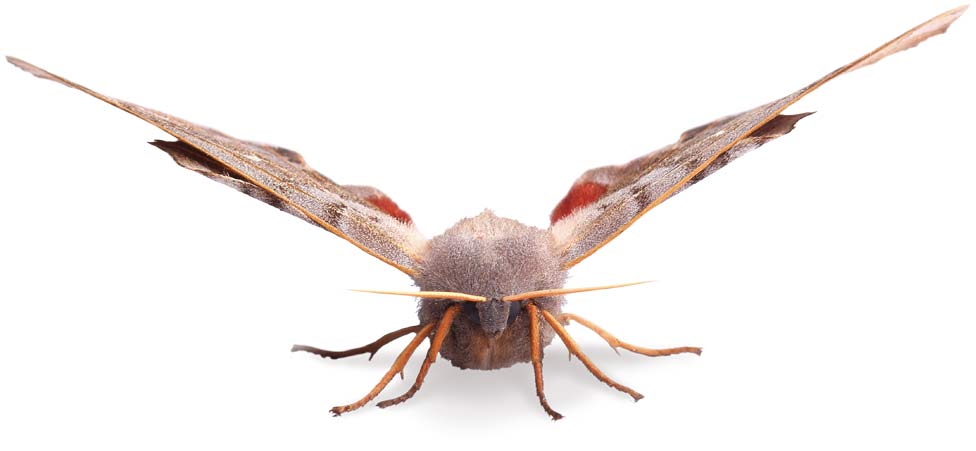
Hawk Moth
Order: Lepidoptera
Family: Sphingidae
Specimens in the Bug Closet: 120
The hawk moth rubs its genitals together to produce noises that interfere with the sonar signals used by bats to locate their insect prey.
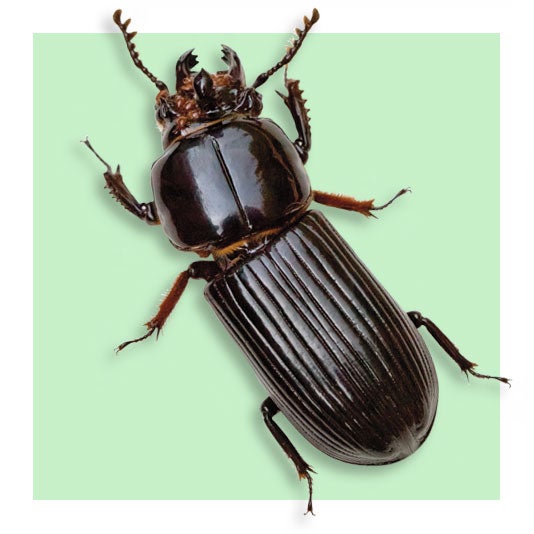
Bess Beetle
Order: Coleoptera
Family: Passalidae
Specimens in the Bug Closet: 61
In a rare display of parental devotion in the insect world, the adults of bess beetle family groups remain with their young ones, protecting them until they are strong enough to strike out on their own. Although researchers have tried to replicate every condition found in the wild, none has been able to sustain an ongoing colony of these family-oriented beetles in the lab. And maybe that’s not such a bad thing, as mites are commonly found hitching a ride atop certain species, like the horned passalus (seen here).
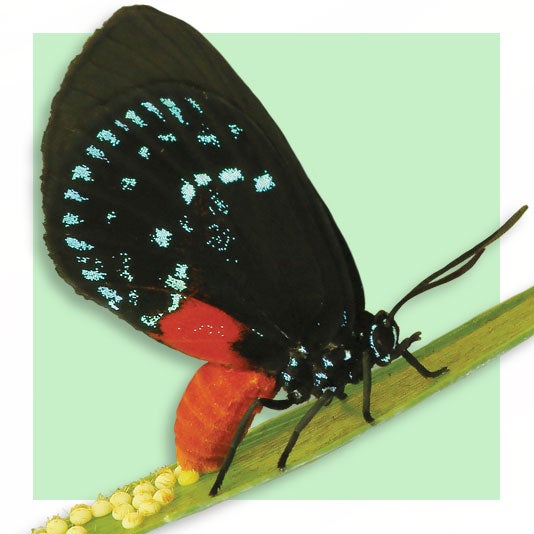
Atala Butterfly
Order: Lepidoptera
Family: Lycaenidae
Specimens in the Bug Closet: 1
Once considered the most conspicuous insect in South Florida, the Atala butterfly was thought to be extinct in the 1950s. Their disappearance was tied to an overharvesting of the coontie plant, on which the Florida native butterflies lay their eggs and caterpillars munch. Thanks to scientists who collected and preserved specimens, we knew what they looked like and where they once lived — among the pine rockland habitat in southeast Florida. In 1979, a local naturalist discovered an Atala butterfly colony off the coast of Miami. Today, the coontie is a popular plant for landscaping, and it’s believed that every Atala colony currently alive originated from that single colony found only 38 years ago.
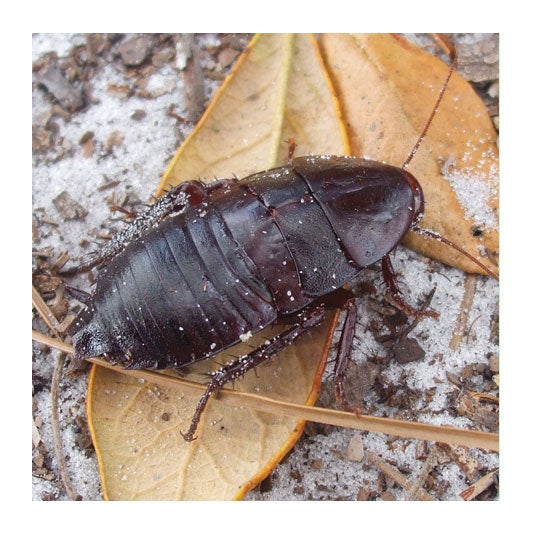
Palmetto Bug
Order: Blattodea
Family: Blattidae
Specimens in the Bug Closet: 21
We may tell tourists that all roaches are palmetto bugs. But if they are in the house and snacking on crumbs, they are more likely to be American cockroaches and a sign that things may not be as clean as they should be. The true palmetto bug generally prefers the outdoors, where they often live in the branches of palmetto trees. When alarmed, the insect puts off a stench to ward off predators and signal nearby palmetto bugs to scatter.
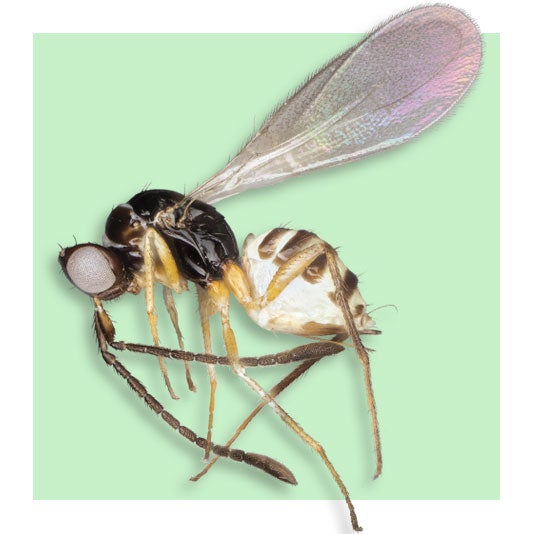
Fairy Wasp
Order: Hymenoptera
Family: Mymaridae
Specimens in the Bug Closet: 6,952
Nearly too small to see and too light to create the air resistance needed to fly, the tiny fairy wasp doesn’t even have normal wings. Instead, it swims along the air currents, using oarlike wings to control its movement. If you’ve spent any time outside in Florida, a good many fairy wasps have floated by you, silent and small.
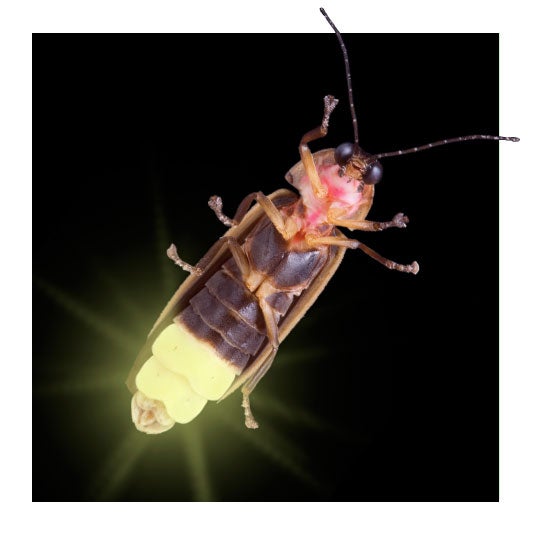
Firefly
Order: Coleoptera
Family: Lampyridae
Specimens in the Bug Closet: 887
This female firefly mimics the flashing patterns or mating calls that attract male fireflies of other species. The males accept the flashy invite and arrive only to find they have been invited to dinner — at which they will be the main course.
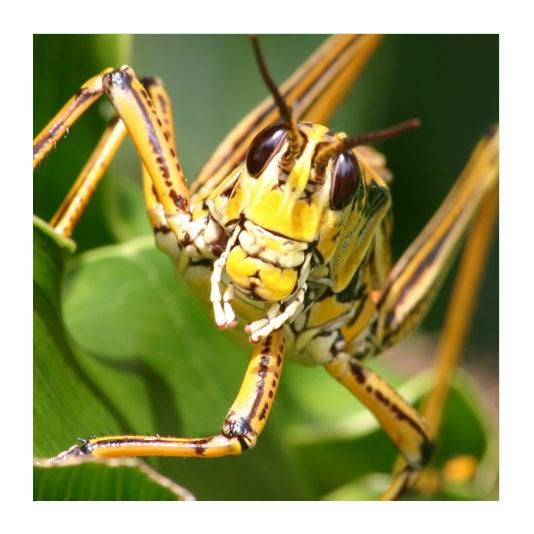
Lubber Grasshopper
Order: Orthoptera
Subfamily: Romaleinae
Specimens in the Bug Closet: 40
Lubbers emit a foul odor and secrete toxins that will poison predators. However, loggerhead shrikes have figured out how to turn them into dried delectable delicacies. The birds capture the grasshoppers and impale them on thorns or barbed wire. They let nature do the rest, waiting for the dead insects to detoxify while they decay and dry out.
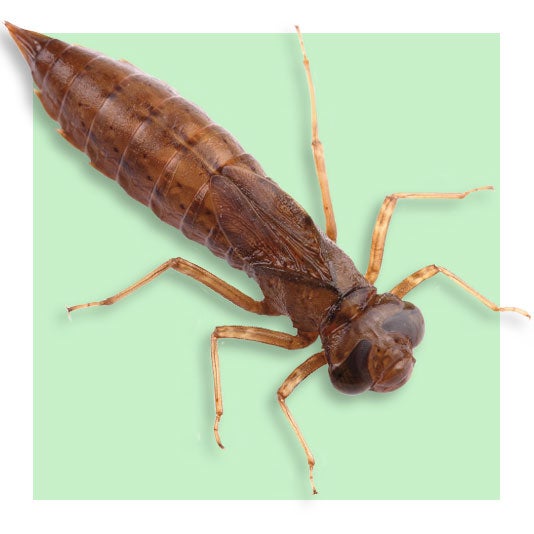
Dragonfly Nymph
Order: Odonata
Suborder: Anisoptera
Specimens in the Bug Closet: 120
Why do these insects breathe through their butts? Short answer: Because that’s where their gills are located when they are hatched underwater. And when the young insects expel water out of their rear gills, it propels them forward.
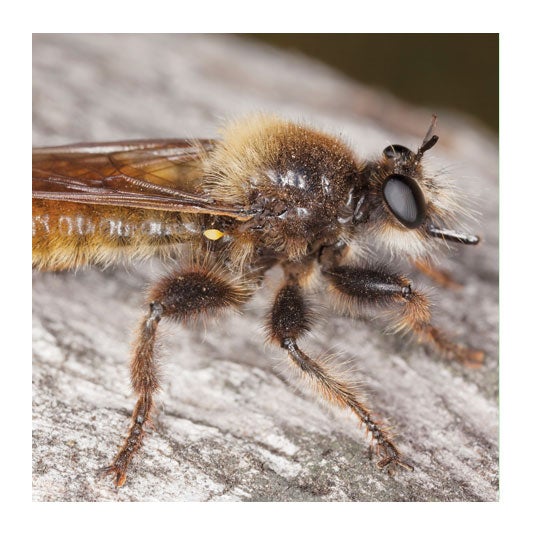
Robber Fly
Order: Diptera
Family: Asilidae
Specimens in the Bug Closet: 67
A type of robber fly, the Bee Killer has a well-earned nickname. It kills its prey, often bees, by stabbing them with its sharp snout and then injecting its victims with a substance that paralyzes them and liquefies their insides before sucking out the remains for sustenance.
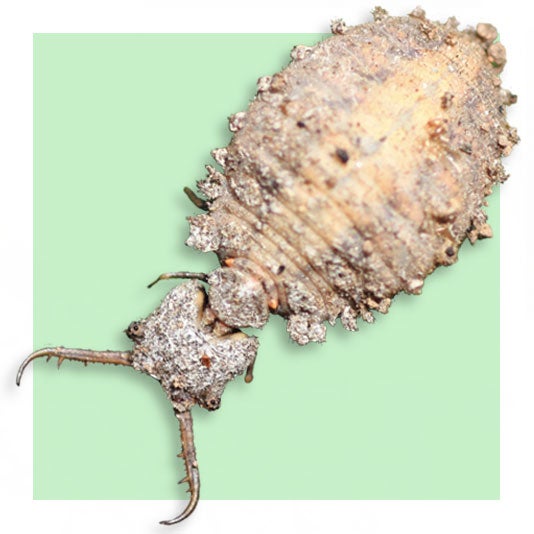
Antlion
Order: Neuroptera
Family: Myrmeleontidae
Specimens in the Bug Closet: 306
The antlion buries into the sand, creating a small pit to trap other insects, especially ants that become snacks to feed its voracious appetite. While the antlion sounds fierce, its other nickname, the doodlebug, comes from the curlicue trail it leaves behind.
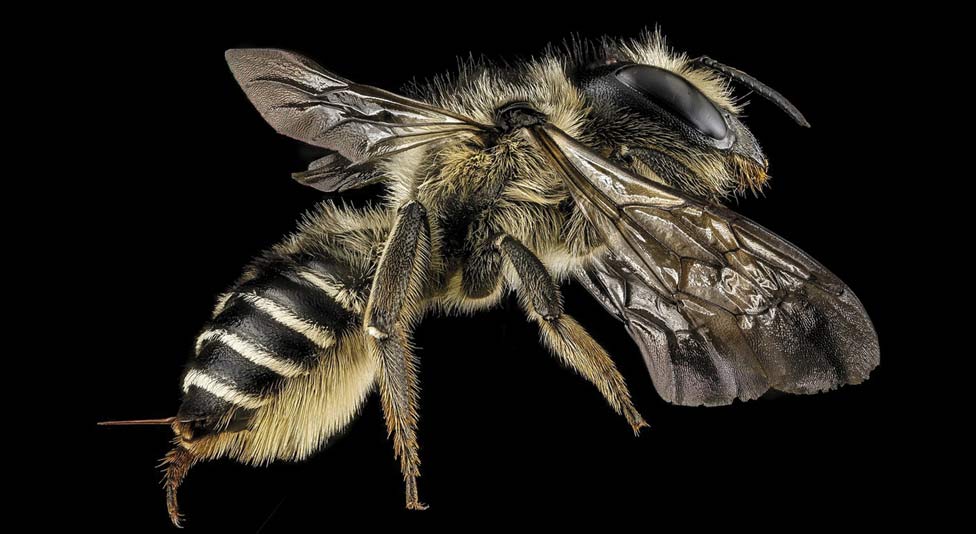
Leaf-cutter Bee
Order: Hymenoptera
Family: Megachilidae
Specimens in the Bug Closet: 1,677
The female leaf-cutter bee is both a queen and worker bee. This gentle bee gathers pollen, lays eggs and cuts holes in leaves for her nest. (You can tell if one’s nearby by the small, almost perfectly round pieces that are missing from leaves.) And unlike her cousin the honeybee, which wets the pollen so it sticks to its legs as it travels from flower to flower, the leaf-cutter bee carries dry pollen on the underside of her hairy abdomen, resulting in significantly more pollinated flowers.
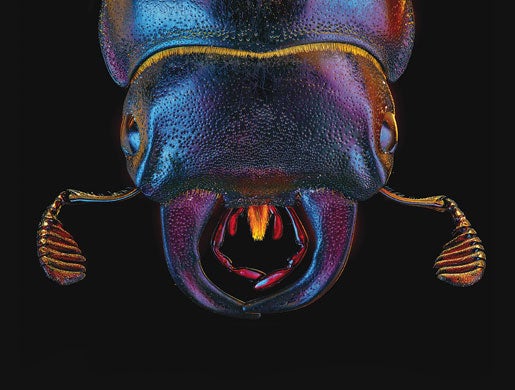
Stag Beetle (cover image)
Stag beetles use their furry, orange tongues to drink fruit juice, tree sap and water — their only sustenance. And while the males appear more threatening with their large, antlerlike mandibles, the smaller-jawed females, like the one shown here, are the ones to watch for. Their bite is more painful for humans.
The Bug Closet has identified 23 new species of insects, including 13 found on the UCF campus.
These include 18 hymenopterans (bees, wasps and ants), four coleopterans (beetles) and one dipteran (fly).
The insects discovered at UCF are:
– parasitic wasp
– parasitic wasp
– parasitic wasp
– long-horned oak borer
– parasitic wasp
– parasitic wasp
– sweat bee
– parasitic wasp
– case-bearing leaf beetle
– parasitic wasp
– parasitic wasp
– parasitic wasp
– parasitic wasp
Name A Bug
Looking for a unique gift idea? By donating to the Bug Closet, you can have the chance to name a new species after yourself or someone else. To learn more about naming options or to donate specimens, equipment or money to keep the Bug Closet flourishing, visit sciences.ucf.edu/biology/bugcloset/giving.